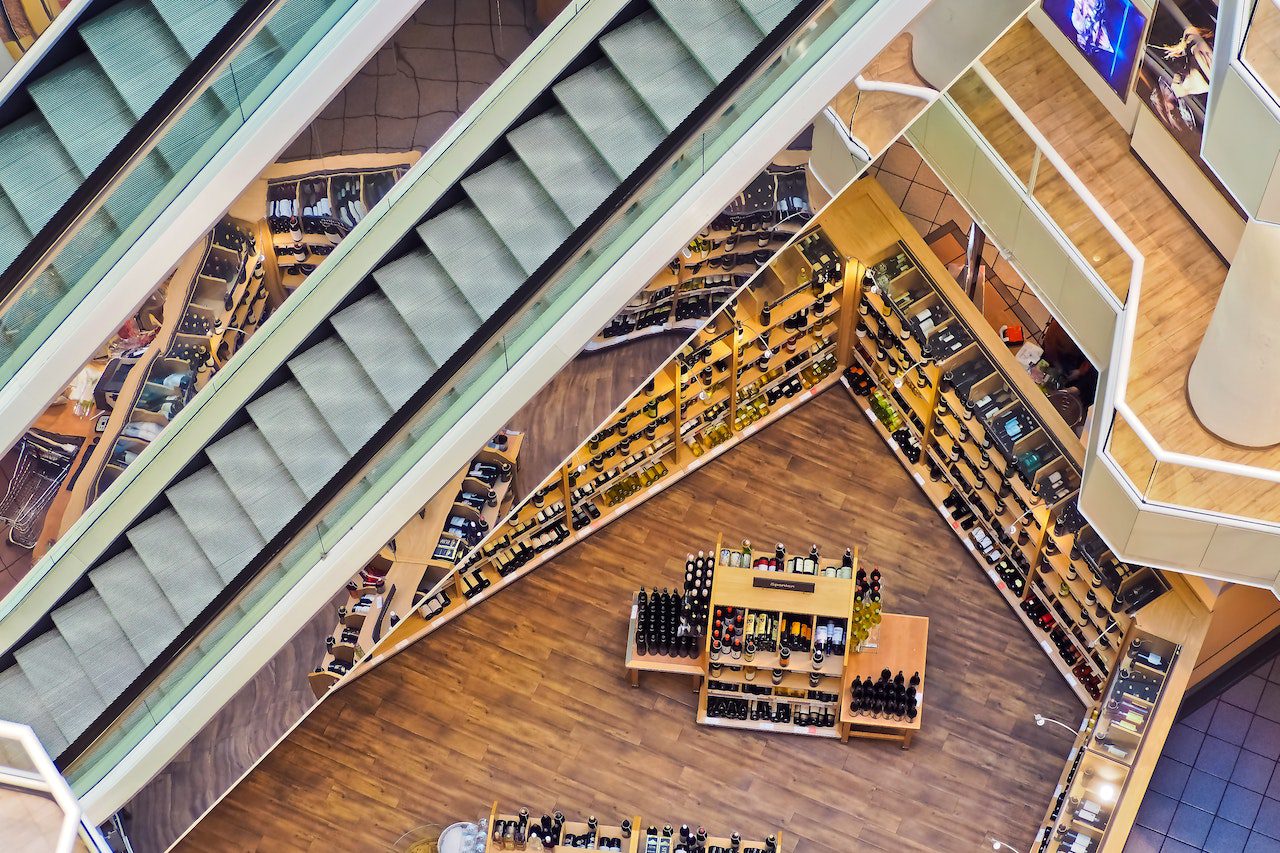The future of shopping malls in India is not as bleak as it seems. Although malls have been a subject of many debates ever since the eCommerce era started, there is no denying the fact that shopping malls have still managed to survive and even thrive.
As technology catches on and becomes popular in India, the concept of malls may go away. The word itself is a foreign term that has been adopted in India as part of the recent wave of Westernization and globalization.
The census of India, in 2001 said that India has 1.9 million retail outlets, of which 87% are tiny neighborhood stores. The most important feature of these shops is that they are operated by members of the family, not professional shopkeepers. They might be the hardest to find since most of them don’t have their names displayed outside and you might not even notice them. The second most common kind is small-scale enterprises selling products sourced and distributed by somebody else, generally on a commission basis.
The increasing popularity of online shopping
The online shopping industry in India is growing at a fast pace. The sector has been expanding at a compounded annual growth rate (CAGR) of 70% since 2010 and is expected to reach $8 billion by 2020.
The increasing popularity of e-commerce in the country can be attributed to several factors, including ease of access, convenience, and comfort. People are now more comfortable placing an order online than visiting a physical store, especially when they have no time or are not physically fit enough to go out shopping.
Moreover, people tend to shop online during their free time – after office hours or over weekends. This increases their chances of buying products that they may have forgotten about or would like to keep as a spare part or accessory for their gadgets.
Limited retail space
Shopping malls are a dying breed. They’re expensive to build, easy to get into, and hard to get out of. The retail space is limited, and it’s not uncommon for retailers to pay rent in empty stores.
The big problem with shopping malls is that they’re an old idea in a new world. The days of going to the mall and buying everything you need from one store are over. We can now shop from home if we want to — thanks to Amazon Prime and other online retailers — but we can also go to our local grocery store or coffee shop or pharmacy and pick up items we need on our way home from work.
As a result, shoppers have less reason than ever before to spend their time in malls. Just look at the numbers: Malls are closing at an alarming rate — more than 400 in 2017 alone — and retail sales continue to decline year after year as more people shop online instead of in stores.
Convenience is important
By the time you read this, we will have had the first major snowstorm of the season. You might be thinking that this is not a good time to go shopping. But if you look at the facts, you’ll see that convenience is important in shopping malls.
Malls are open on Sunday, even though most stores close on Sunday in many areas. Many stores also stay open late on weekdays and on Saturdays so that customers can shop when it’s convenient for them.
If you have children, it’s easy to find a safe place for them to play while you shop or eat at one of the restaurants in a mall. And there are plenty of things to keep kids busy — from video games to movies playing in the food court theatres.
Many malls also have special events like ice-sculpting contests or fashion shows by local designers. These events draw crowds of people who want to see what’s new and exciting in fashion and design before they buy their next outfit or pair of shoes.
In addition, many large malls have movie theatres located inside them so that parents can take their children out for an evening of entertainment during these cold winter months!
Expensive lease deals are losing their shine
Shopping mall landlords are facing a tough time as retailers shut down stores and shoppers shift their spending online.
That’s forcing landlords to come up with new ways to attract tenants and hang onto the ones they have.
“The only way for landlords to compete with Amazon is to offer better service,” said Steven Roth, chairman of Vornado Realty Trust, whose major malls include the Paramus Park Mall in New Jersey and the Pinnacle in Westchester County, New York.
Roth is offering retailers cheaper rents if they agree to longer-term leases — as much as 15 years instead of five years — along with other incentives like free rent during renovations or equipment upgrades.
Landlords also are offering retailers more options when it comes to signing leases, said Doug Ritter, founder of the Counter Terrorism Institute and expert on retail real estate. “They’re trying to make it easier for the retailer,” he said. “They’re trying to make it so they can’t say no.”
Malls are losing footfalls
Shopping malls are losing footfalls as more and more people are ditching traditional shopping outlets to go online or even to smaller stores that sell products at competitive prices.
The rise of online shopping has taken a toll on the retail sector, with several retailers shutting down or reducing their store count dramatically. While many retailers have been able to survive by reducing their costs and improving their supply chains, others have not been so lucky.
According to the National Retail Federation (NRF), over 6,500 stores closed down in 2018, bringing the total number of store closures since 2008 to nearly 50,000 stores. The situation is expected to get worse this year as well with several retailers planning another round of store closures.
With over 15% of malls closing across America since 2010, it is evident that brick-and-mortar retailers need to rethink their business model if they want a chance at survival in this age of e-commerce.
Some experts believe that getting rid of underperforming stores is necessary for survival but once done, companies should focus on improving the experience at remaining locations through better customer service and personalization while also investing in technology like augmented reality (AR) which will help improve customer engagement levels and drive sales.”
Conclusion
With the rise of e-commerce, shopping malls are on the decline. This is a worrying trend that reflects poorly on India and its citizens. E-Commerce has many benefits for Indian citizens and it is simply shocking that people must still shop in unorganized markets to get what they need from modernity. Shopping e-commerce sites offer excellent customer service and most of the time, you will get the latest designs of clothes and accessories at a lower price. It feels like India can’t get into the 21st century without changing its policies on how we trade.
India’s urban retail market is booming, with new shopping malls coming up and existing ones expanding to accommodate the growing number of visitors. It has been predicted that by 2010, the number of shops in urban areas will go up by 27%. A shopper spends over an hour in a mall, which includes about half an hour on Pick Up & Delivery services.












